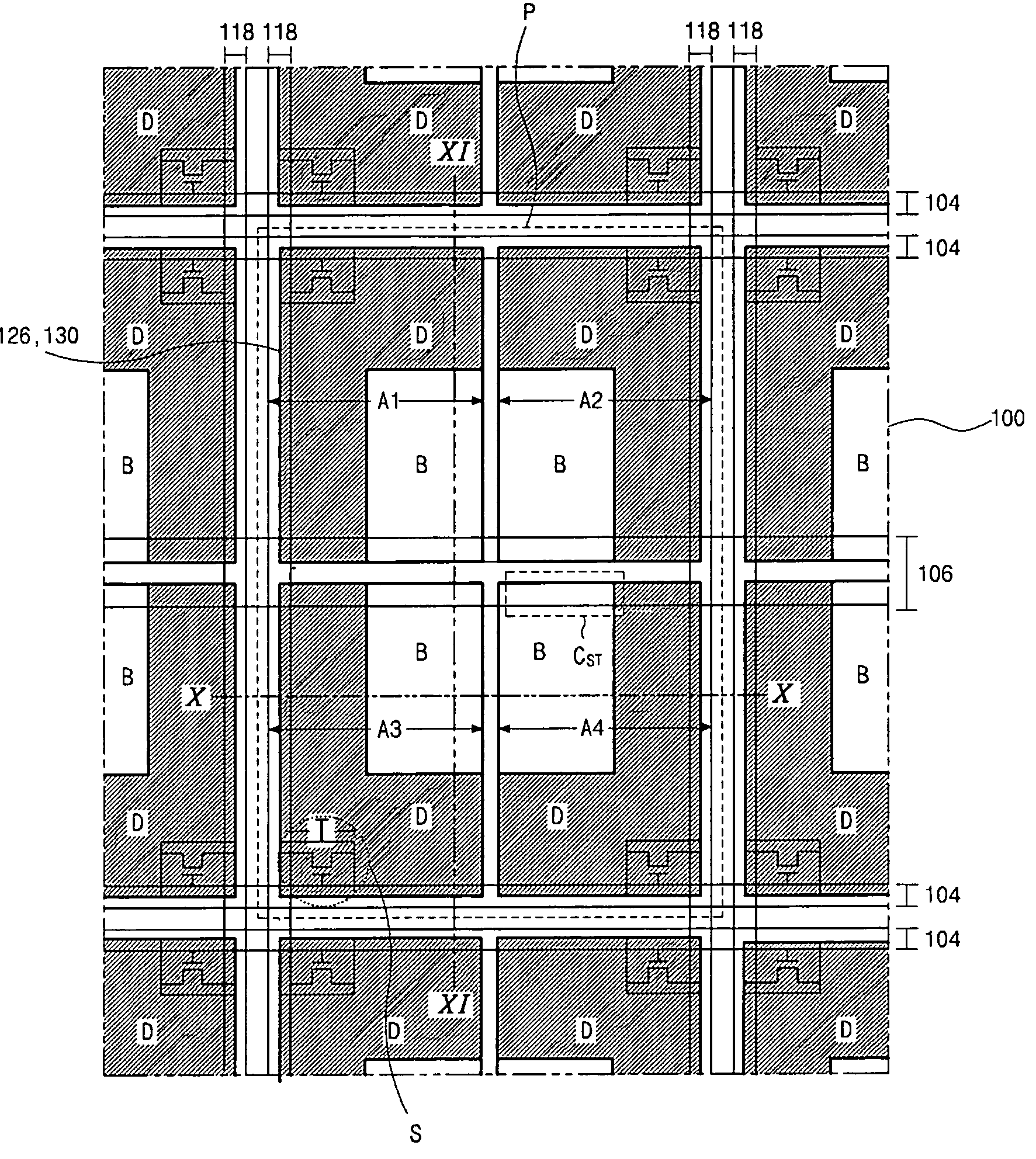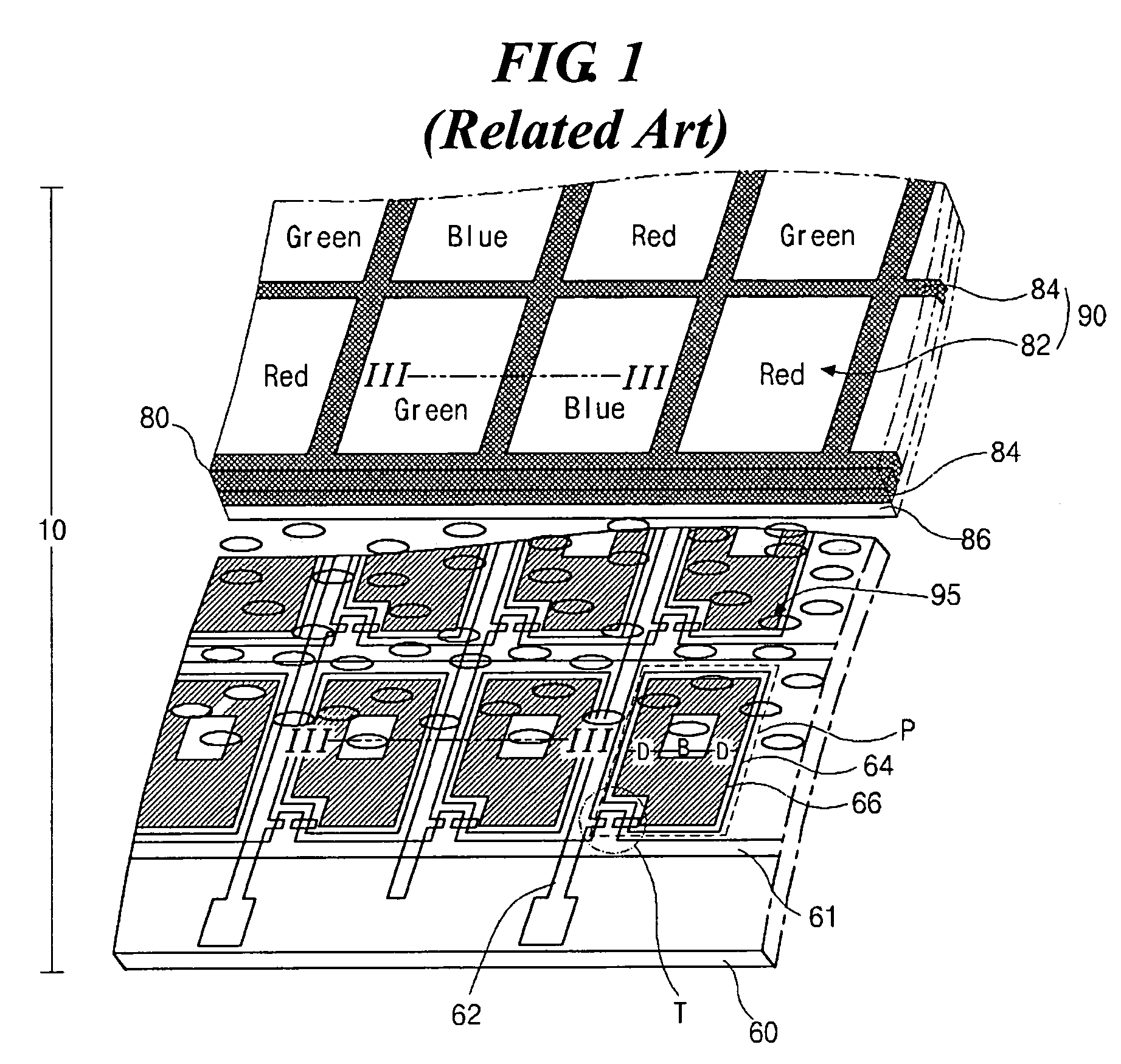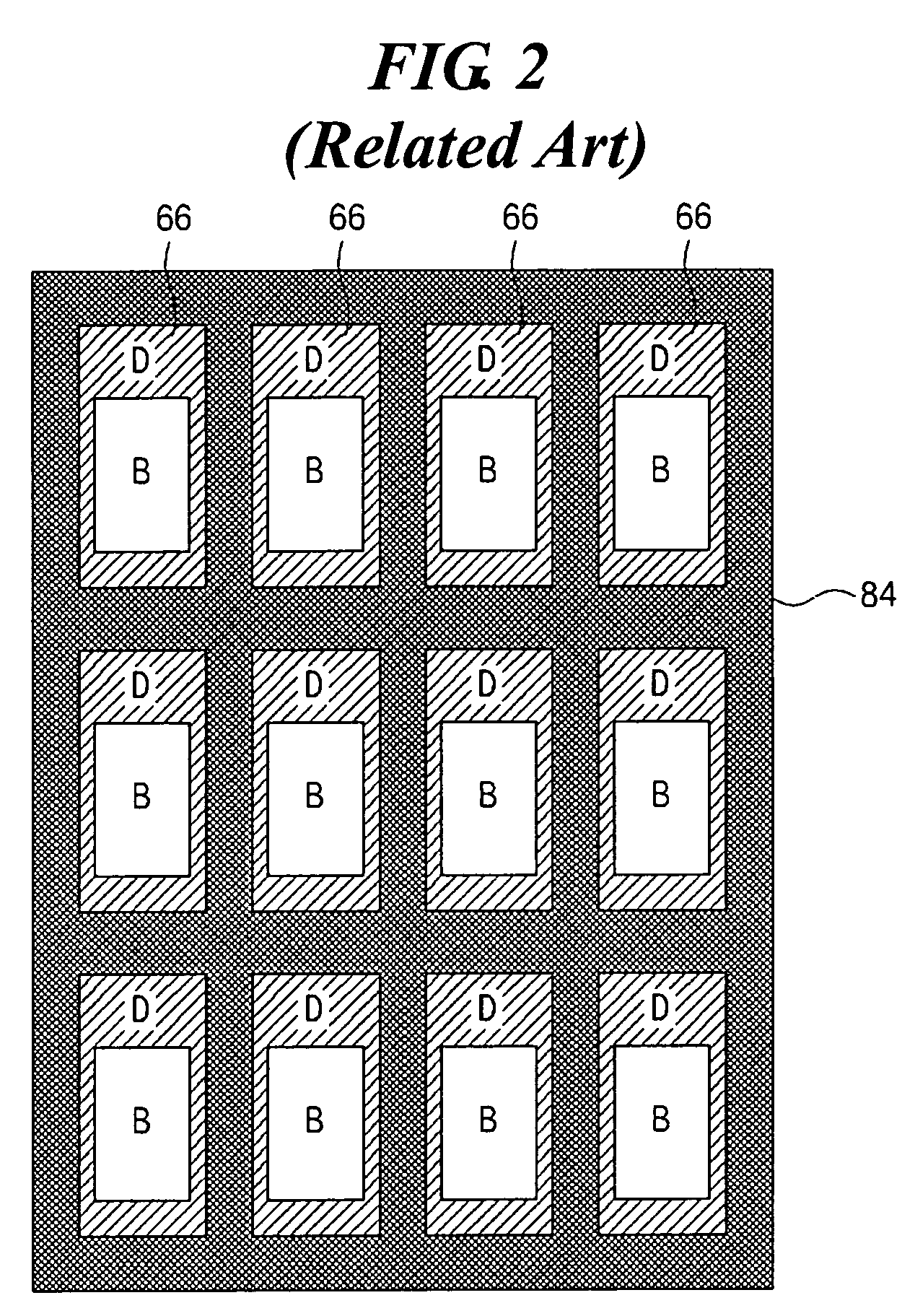Transflective liquid crystal display and method of fabricating the same
a liquid crystal display and reflector technology, applied in optics, instruments, electrical equipment, etc., can solve the problems of increasing power consumption of backlight, affecting the visibility of display, and consuming 50% or more of the total power consumed by the lcd device, so as to improve the aperture ratio, simplify the rubbing process, and high contrast ratio and brightness
- Summary
- Abstract
- Description
- Claims
- Application Information
AI Technical Summary
Benefits of technology
Problems solved by technology
Method used
Image
Examples
first embodiment
[0065]FIG. 7 is a plan view illustrating a transflective LCD device according to the present invention, and FIG. 8 is an enlarged plan view illustrating a portion S of FIG. 8.
[0066] As shown in FIG. 7, a plurality of unit pixels P is defined in a substrate 100, and each unit pixel P has first to fourth sub-pixel regions A1-A4 each of that has a transmissive portion B and a reflective portion D. Unlike the previously shown related art, the transmissive portion B is located at one corner of each of the first to fourth sub-pixel regions A1-A4. The transmissive portions B of the first to fourth sub-pixel regions A1-A4 are gathered at the center of the unit pixel P. Namely, the transmissive portions B are close together in the middle of the unit pixel P, and the reflective portions D surround the transmissive potions B in the unit pixel P.
[0067] Still referring to FIG. 7, gate lines 104 are horizontally disposed over the substrate 100, and data lines 118 are longitudinally disposed over...
second embodiment
[0090] As described before, the transmissive portions B of the first to fourth sub-pixel regions A1-A4 gather together in the center of the unit pixel P. The sub-pixel region includes the transmissive potion B at one corner thereof opposite to the thin film transistor T, and thus the transmissive portion B is located next to the other transmissive portions of the neighboring sub-pixel regions within the unit pixel P. This structure, in which the transmissive portions B are gathered, decreases the border area between the reflective portion D and the transmissive portion B within each sub-pixel region by one half compared to the related art shown in FIG. 5. Furthermore, since the transmissive portions B are disposed together in the center of the unit pixel P, the marginal value in forming the array elements is enlarged. Namely, since the border area between the reflective portion D and the transmissive portion B decreases by half compared to the related art, the aperture ratio is corr...
PUM
| Property | Measurement | Unit |
|---|---|---|
| height | aaaaa | aaaaa |
| height | aaaaa | aaaaa |
| distance | aaaaa | aaaaa |
Abstract
Description
Claims
Application Information
 Login to View More
Login to View More - Generate Ideas
- Intellectual Property
- Life Sciences
- Materials
- Tech Scout
- Unparalleled Data Quality
- Higher Quality Content
- 60% Fewer Hallucinations
Browse by: Latest US Patents, China's latest patents, Technical Efficacy Thesaurus, Application Domain, Technology Topic, Popular Technical Reports.
© 2025 PatSnap. All rights reserved.Legal|Privacy policy|Modern Slavery Act Transparency Statement|Sitemap|About US| Contact US: help@patsnap.com



